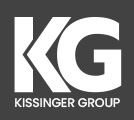Mastering Organizational Redesign: Avoiding the Productivity Dip and Leading with Clarity
If you’ve been through—or are staring down—an organizational redesign, you know the stakes are high. Companies restructure to become more efficient, competitive, or innovative. But here’s the paradox: instead of a quick leap forward, productivity often dips right after a redesign.
Why? Because restructuring is messy.
Sondra Kiss of Kissinger Group recently hosted an insightful conversation with organizational design pros Wendy Bowers and Briana Sharp. Between them, they’ve led nearly 40 redesigns across industries. They didn’t sugarcoat it. They shared the good, the bad, and the ugly—along with strategies that can help you navigate a redesign and actually come out stronger.
Here’s what they had to say.
Mistakes Most Organizations Make During a Redesign
Let’s start with where most redesigns go wrong.
-
Designing around the people you already have
It’s tempting to structure your org chart around existing talent. But that can lock you into today’s reality rather than designing for the future. -
Jumping in without knowing the problem you’re solving
If you don’t have a clear vision of what’s broken—or what’s possible—you can end up restructuring for restructuring’s sake. -
Neglecting post-restructure support
It’s not enough to announce a new structure and call it a day. Leaders and teams need ongoing support—training, team building, and leadership development—to make the new design work. -
Leaving communication gaps
When communication lags, people fill in the blanks with their own narratives. Uncertainty spreads like wildfire.
How to Do Organizational Redesign Right: 5 Actionable Steps
1. Communicate with Clarity (Not Just Transparency)
Employees want transparency. Leaders aim for clarity. The two don’t always align.
Briana Sharp explained it best: clarity means being deliberate about what you can and cannot share. Employees deserve honesty—but you don’t need to share every behind-the-scenes debate. Be direct, explain what decisions are still in flux, and revisit the message often as plans evolve.
Also, set a communication cadence. Wendy Bowers emphasized how critical it is to avoid long gaps between updates—even when there’s little news. That consistency builds trust.
2. Build a Messaging Framework (and Stick to It)
Think of it like a messaging architecture—a core set of 5-7 key points that guide every communication. Repeat these messages. Yes, even if you feel like a broken record. While leaders and consultants might get tired of hearing the same thing, employees need that repetition to make sense of the change.
Bonus: Equip your mid-level leaders with talking points and scenario-based training. They’re on the frontlines of these conversations and need more than a memo—they need tools to respond thoughtfully to tough questions.
3. Engage Employees Early (But Set Boundaries)
Employee buy-in is crucial—but that doesn’t mean handing over decision-making power.
Wendy and Briana recommend involving employees early by inviting input during current-state assessments or future-state ideation workshops. This gets people thinking, opens dialogue, and builds ownership.
Just be clear: input is not the same as decision-making. Explain how feedback will be used and who ultimately makes the calls.
4. Activate the “Head, Heart, and Hands” Framework
Once your design is ready, how do you get everyone on board?
Briana suggests addressing all three dimensions:
-
Head: Explain the “what” and “why” of the redesign—the business case, goals, and rationale.
-
Heart: Acknowledge emotions. Change triggers fear, hope, and uncertainty. Address people’s concerns and aspirations.
-
Hands: Focus on action. What new skills, tools, or training do employees need to succeed in the new structure?
This simple framework helps ensure your communications and plans resonate on every level.
5. Don’t Stop at Day One: Plan for Activation and Reboarding
Here’s the truth: the day you announce the new structure isn’t the finish line—it’s the starting line.
Briana calls it reboarding—helping people settle into new roles, even if they’re long-time employees. That means:
-
Training programs
-
Role clarity sessions
-
Team-building workshops
Wendy calls this the activation phase. Think of it as embedding the new structure into day-to-day operations—through meetings, offsites, and ongoing coaching. Plan for long-tail support that could stretch months after the official rollout.
And don’t forget: measure progress. Align metrics and incentives to reflect the new structure. If you want new behaviors, reward them.
Final Thought: Redesigns Are Hard, But They Can Work
Organizational redesigns aren’t easy—they take time, energy, and a lot of listening. But with clarity, employee engagement, and post-restructure activation, you can avoid the dreaded productivity dip and create lasting, positive change.
If you’re planning a redesign (or right in the middle of one), listen to the full discussion with Wendy Bowers and Briana Sharp for more insights.
